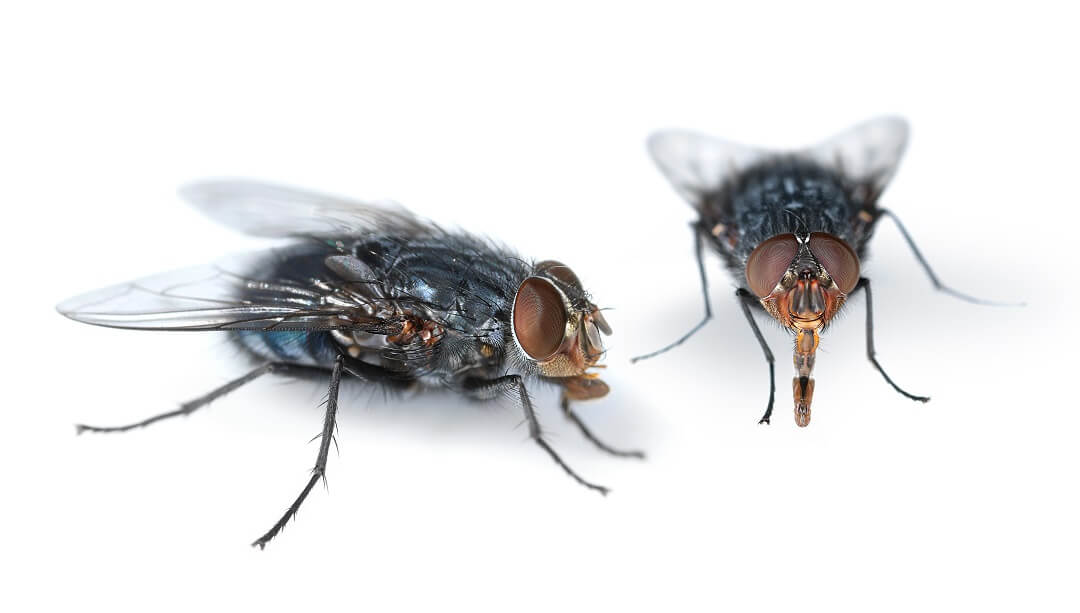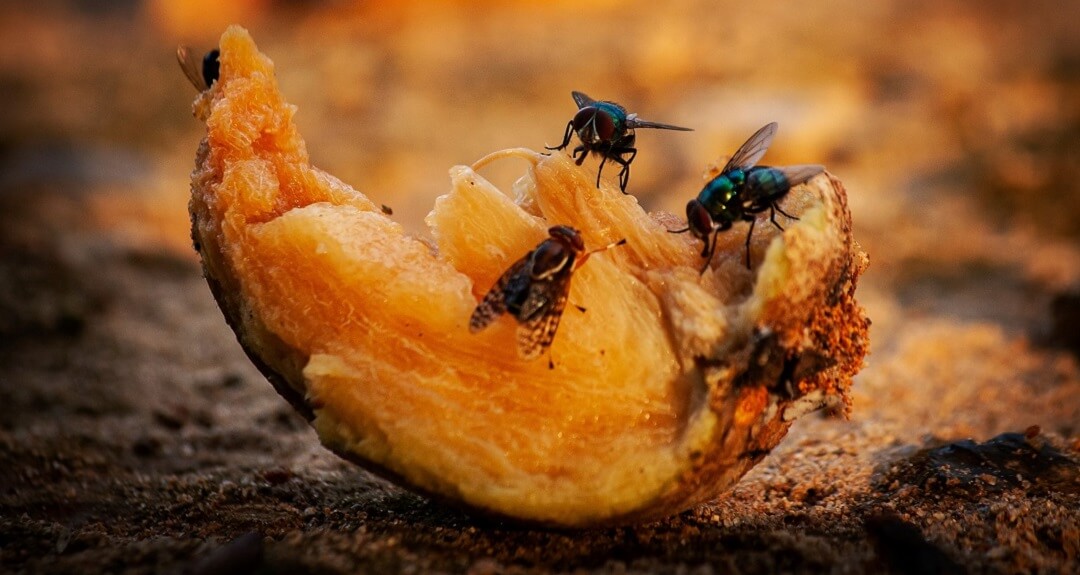
A picnic in the park, a walk through the woods, or a BBQ with friends and family are all ideal summer activities that can be spoiled by pesky flies that never leave you alone. Flies are among the most widespread insects, with over 150,000 types identified in over 150 insect families worldwide.
Even though they are part of our food chain, they are nevertheless irritating to have around. And it’s not like the common fly is completely harmless. Some can cause serious infections.
House flies, for example, have been linked to the spread of illnesses such as food poisoning and dysentery. While feeding on the blood of humans and other animals, flies and mosquitoes can inflict painful bites, and some kinds even carry lethal diseases.
Southern California is host to different types of house flies, be it common flies or unique ones. But if you’re looking to get rid of them from your home or office, the first step is to identify them. Let us get to it.
Key takeaways
- Flies are common insects that can be found worldwide, with over 150,000 types identified in over 150 insect families.
- Flies can be irritating and can cause serious infections, as some species are linked to the spread of illnesses such as food poisoning and dysentery.
- Southern California is host to various types of flies, including blow flies, fruit flies, house flies, garbage flies, gnat flies, drain flies, false stable flies, stable flies, and flesh flies.
- Understanding the behaviors, seasonality, and life cycle of different fly species can help determine effective preventative and fly control strategies.
- Flies such as blow flies, fruit flies, and garbage flies are commonly found around decaying organic materials, while house flies, drain flies, and stable flies can infest homes and pose health risks.
What are flies?
Almost any little flying insect is generally referred to as a fly. However, the term refers to the species belonging to genus Dipterans. These are the “real” flies found all across the globe, including the subarctic and high mountains.
Flies have a movable head, huge compound eyes, and mouthparts adapted for piercing and sucking. Their wing configuration allows them to navigate easily in flight, while claws and pads on their feet allow them to adhere to smooth surfaces.
Common flies in Southern California
Different fly species, such as the house fly, fruit flies, and drain flies, are more abundant than others. Understanding the behaviors, seasonality, and life cycle of various flies varieties can help determine the most effective preventative and fly control strategies.
Let us learn about the most common types of flies in California.
Blow fly
Blowflies are similar to or somewhat larger than house flies in size. These are also called bottle flies because their glossy blue and green coloration resembles colorful glass bottles.
They feed and reproduce in rotting animal debris found in the trash or in dead corpses. Garbage-containing food should be secured, dishes should be washed as soon as possible, and rubbish should be removed from the premises. They usually thrive in the garbage and around the decaying corpses of animals or other organic materials.
Fruit fly
The adult fly is 3 to 6 mm long, with a brightly colored body and wings. The larvae consume over 250 different types of plants and fruits, including avocado, citrus, apples, peppers, and guavas.
Fruit flies are frequently observed infesting fruit or lingering over fermenting wastes in pubs, fruit orchards, vegetable gardens, and breweries. They are commonly spotted anywhere fruits and vegetable rot.
House fly
The common housefly is a 14-inch-long dull grey fly with four black stripes on its body’s center region (thorax). They eat anything from dinner scraps to rotting animals and even feces.
Its maggots hatch from eggs left in decomposed vegetable debris, compost, or animal manure from rabbits and fowl.
Garbage fly
Black garbage flies are 1/5″ long little, thin, black, glossy insects. Going by the name, garbage flies feed on anything found in the dumpster or any dead or decaying food matter.
They thrive in vast numbers at rubbish dumps but are rarely found near residences in major cities. They are common near rural properties, particularly those without a regular rubbish pickup.
Gnat fly
These flies are around 2.5 millimeters long, while some species can grow to reach as large as 5.1 millimeters. Their hue ranges from yellowish to black, and nearly all species have crimson eyes.
Gnats are a widespread irritation everywhere there is food. Because these flies like to deposit their eggs on decomposing organic debris, they frequently contaminate food. While they are a problem in agriculture, they are also a nuisance in the house.
Drain fly
Adult drain flies are tiny (1/16 to 1/5 in, 2 to 5 mm), brownish in color, and thickly haired. When asleep, they keep their large wings flat or like a canopy over their bodies. Drain flies consume algae, bacteria, fungus, and other tiny creatures found in the film.
It is frequently found on the walls of toilets, showers, and washrooms. The dark, worm-like larva grows in organic muck that collects in small puddles and tree holes outside. Indoors, it may grow in sink traps, drains, and dead-flow regions of domestic plumbing.
False stable fly
The false stable fly is larger and stouter than the regular house fly. It may enter homes and lay eggs on food that has turned bad. The life cycle lasts 14 days.
Stable fly
The stable fly looks like a house fly but has a thin, pointed beak that it uses to penetrate the skin and suck blood.
Stable flies deserve special note since both sexes feed on the blood of animals, including people, and frequently bite around the ankles. Females deposit their eggs in decomposing straw and dung and damp mounds of animal feed and yard garbage.
It is generally an outside fly that feeds on domesticated animals, but it may infiltrate buildings in rainy conditions.
Flesh fly
Adult flesh flies, like house flies, are dark in color (gray or black). The thorax of most species has three black stripes. They feature a checkerboard pattern on their abdomen and are somewhat bigger than house flies.
They eat dead or decomposing animals. Flesh flies indoors suggest an inadequately sealed home against animals.

Tips on how to prevent flies
We all know flies are annoying, and the moment you spot them lurking around you, you NEED to take action. Try out these steps:
- Identify the flies implicated first, then look for stuff that attracts that species and remove it.
- Eliminating fly breeding grounds, or the substance to which they are drawn and on which they lay eggs, is typically enough to eliminate and prevent fly infestations.
- To enhance an integrated fly management solution, automatic door closing mechanisms and air curtains that push air away from doors can be installed.
- Mechanical fly control, in addition to swatting, includes trapping.
Protect your home from buzzing flies
Controlling flies can be challenging since they reside and breed outdoors, and they can enter your house in many ways. Your best bet would be to seek the help of a residential pest control service, as they are adept with the know-how of inspecting and eliminating flies.
Request an appointment with us to get a free evaluation.

